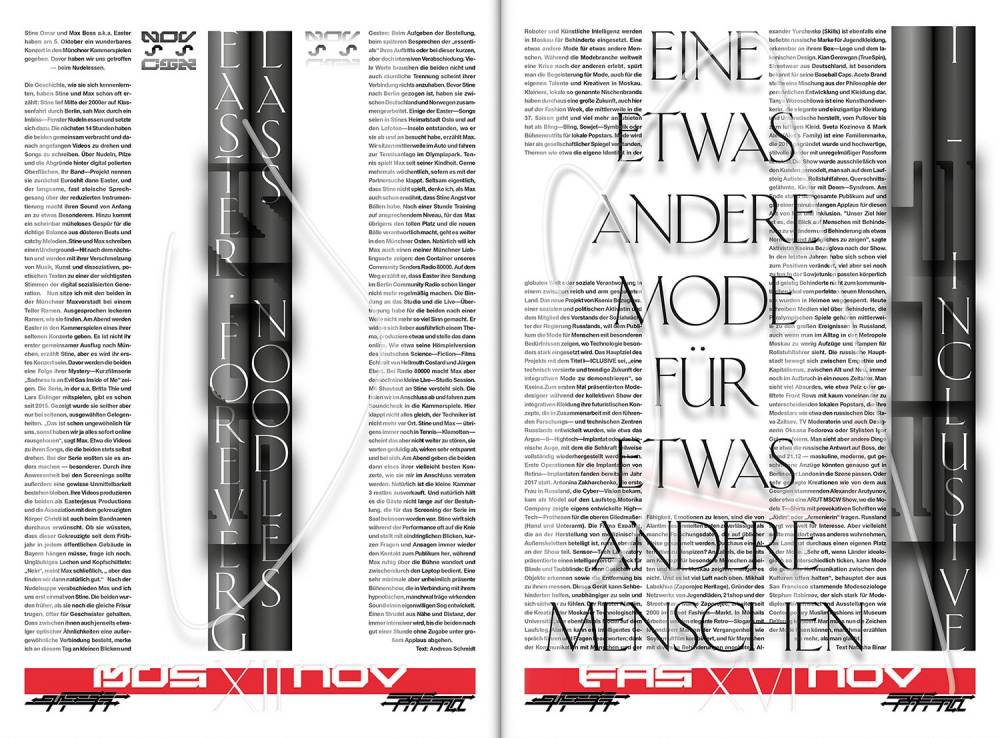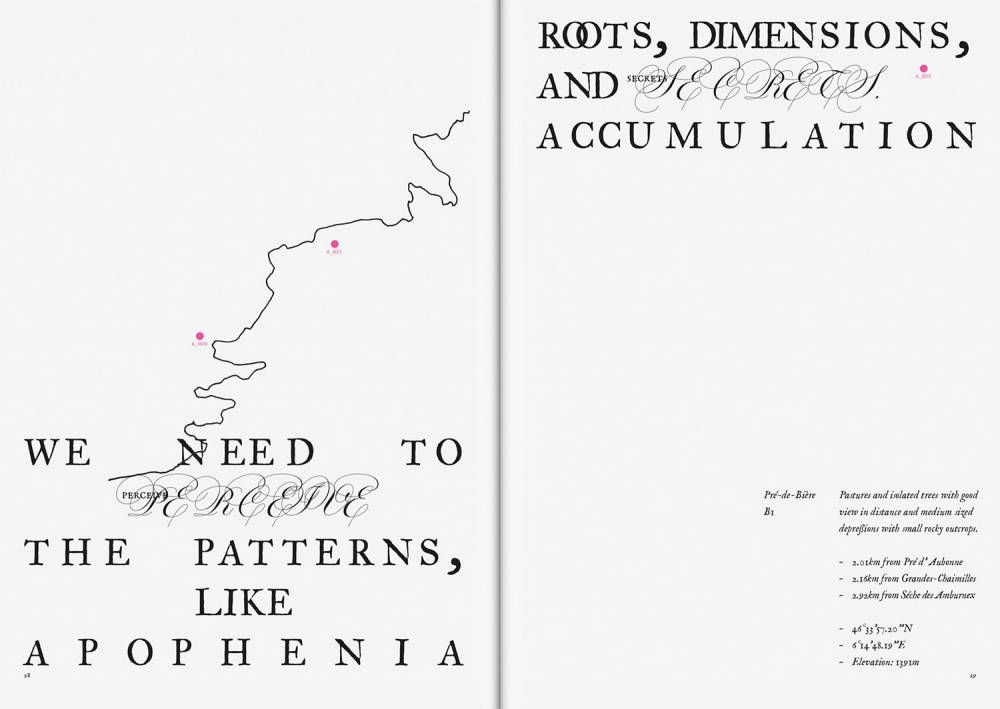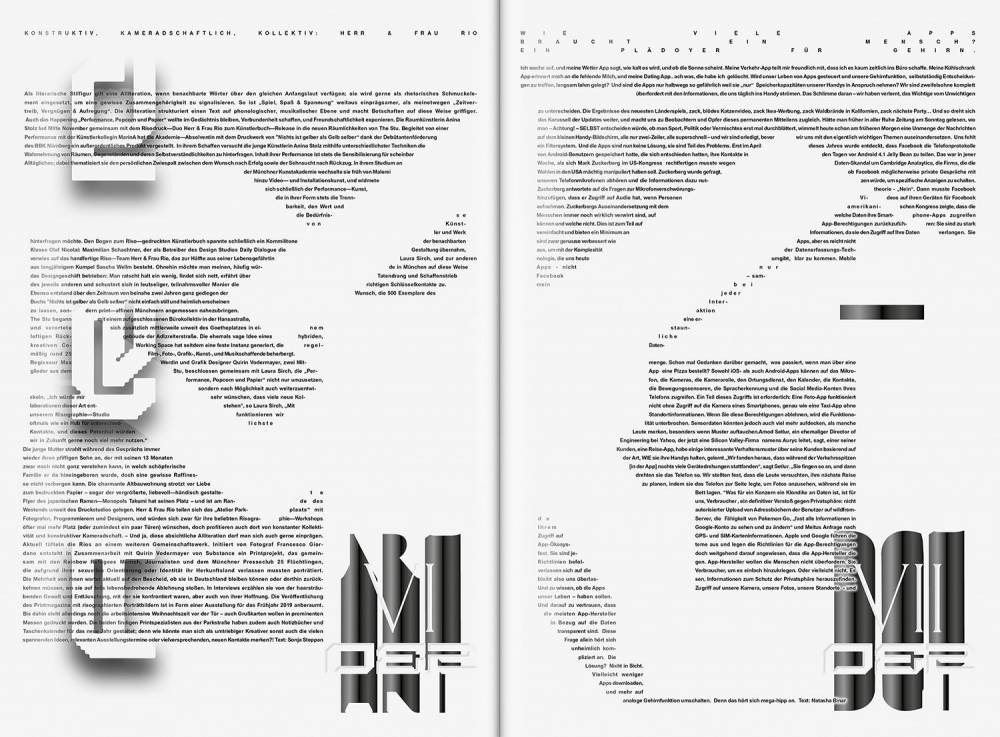Why Mirko Borsche does not believe in brainstorming – Interview featured by #jungbleiben
How do you convince your client that your solution works best for the job, and what do you do when your best friend stops talking to you because your creative ideas take up too much of your personal life?
Mirko Borsche has been part of the Forward Festival line-up several times now. He is the founder of Bureau Borsche, a Munich-based graphic design studio offering design and communication consultancy for clients from all fields of interest while creating original works within the scope of art, subculture, and design.
In our series “Featured by #jungbleiben magazine“, he explains how his team handles idea-finding and why speed is the main requirement for a graphic designer.

As one of the most important graphic designers in Germany, you’re certainly a source of inspiration for many people. Where do you draw the line between inspiration and copy?
Difficult. I think it can be a copy when you notice that something looks very similar to your idea but has no content to it, the creator just liked the look. Then you definitely ask yourself if it’s a copy.
Instagram has become a popular source of inspiration for many people these days. That wasn’t always the case. Do you even use Instagram to look for inspiration?
We strongly turn towards Instagram when we are looking for new talent for various projects, such as Superpaper, or in cities where we don’t know anyone. Especially for illustrators and photographers.
So you contact them directly on Instagram?
Yes, we actually contact them directly on Instagram.

All this endless scrolling is often referred to as information overload. Can there also be such a thing as an inspiration overload?
I only use Instagram in a goal-oriented way. I never use it when I’m bored, only when I’m looking for something specific. This way, you never get into that overload because as soon as you find what you’re looking for, you stop. It’s like having a messy room: once you find the object you were looking for, you stop searching.
This approach seems just as goal-oriented as your demand for a clear working atmosphere. What does that mean to you, a clear working atmosphere?
I think you have to clarify for yourself how, where and how much you want to be working, and at what point you will annoy your friends, family and acquaintances by imposing your professional topics and problems on them.
The main problem is that people – especially in the creative industries – often think that their problems are immensely important.
They then start talking to others about some conceptual or graphic ideas and they don’t even notice that they are boring the people around them. I think you can address such things from time to time but in general, you should try to separate them from your private life.
Is this also something you have learned for yourself by having a family? Was it different before?
For me, it ended when my best friend stopped talking to me. One time, he got up from the table saying that he had had enough now and if I ever wanted to talk about something normal to him sometime, I could call him. That was very straight-forward. I didn’t need to find out the easy way, he just told me right to my face.
You once said that brainstorming was a waste of time. How else do you proceed when you’re defining ideas for clients? How does it work?
Everyone sits down and works on ideas for themselves in a focused environment. With brainstorming it is often the case that only two people are talking while the others are listening. These two people, however, they will be saying things like “I’m gonna say something… I know this sounds stupid… but maybe…”
And as soon as you start your sentence with “That sounds stupid”, you should know that you don’t have to continue.
So first there has to be a clear, defined idea in order to address it?
Exactly. I think a lot of people just use brainstorming as an excuse to kill time. For a decent brainstorming, you would have to take a couple of hours, write down three of your favorite ideas and then pitch them in front of everyone, hoping that one of them will be taken.
But people don’t prepare themselves, they think a brilliant idea will pop into their heads once they sit together. I don’t believe in this ping-pong game of ideas.

This persuasion seems to be something essential for you. Does that ever get in your way? Or is this belief what it takes to create something good?
I think what it really takes is one good idea. Then you can explain to your clients why it makes sense in terms of content, even if it does not make the visual impression they would have imagined.
Of course, if you say “I did it because I like green better”, you’re going to end up in a discussion where the other person says “Yes, but I like blue better and I’m the one who’s paying”.
If we are not prepared, then we get our work thrown back at our faces too. That doesn’t happen to us often, but it does happen from time to time.
This also requires some persuasiveness, self-confidence and the ability to make points. Are these some of the requirements to work well in your field, or to work for you?
The main requirement is to be somewhat intelligent and, above all, to be able to absorb things incredibly fast and then communicate them as easily and as quickly as possible.

Sustainability is another hot topic. In graphic design, it might be more difficult to talk about sustainability but you’re working for the fashion industry too. What’s your take on that?
In our profession, sustainability is a hot topic too and you can definitely pay attention to it in terms of materials, production methods, colors, paper types or finishes. In my opinion, you can also advise clients to invest a little more, especially in print products. Many people claim that print is losing its importance. This is only true if you create a cheap product. Because if you produce something of high quality where the client thinks “I can’t throw this away, I’m going to keep it”, then at least you have created additional value for the object itself.
In the world of fashion, of course, in times of Amazon Prime and e-commerce, it is the number one topic. If you have such a huge carbon footprint already due to delivery, you don’t have any excuse not to pay attention to sustainability.
When it comes to print, for example, do you make sure that you suggest something like that yourself, or only if the client wants it?
No, we always do this, there’s no way around it. We only suggest options that are fully recyclable.
Finally, I was thinking, I won’t be asking the last question myself. I’ll leave it up to you: what would be a question you often ask yourself?
The answer is: that’s a good question.
Since 2007, Mirko is the creative director for weekly newspaper DIE ZEIT and every other publication of the Zeit-Verlag such as Zeitmagazin and Zeit Wissen. Other clients hail from all fields, from culture and media to business including Bavarian State Opera, Thalia Theater, Audi, BMW Group, Nike and more. He was also part of the line-up of this year’s Forward Festival Munich and is featured in the latest Forward Print Magazine.
Illustration by Daniel Triendl
Interview by Iris Writze
In friendly cooperation with www.jungbleiben.com